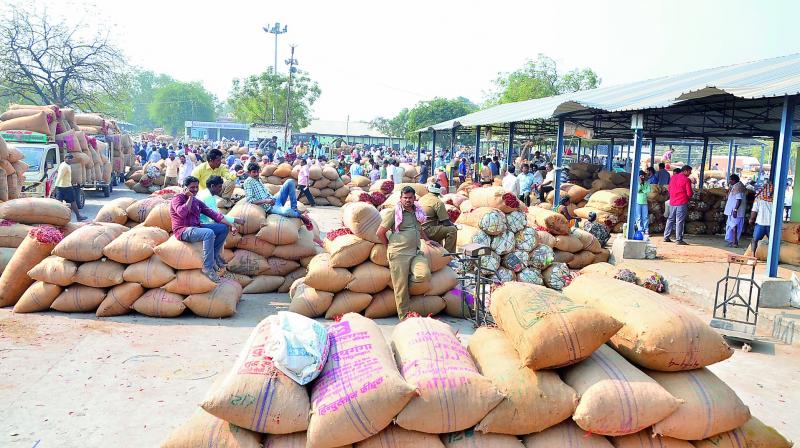Khammam: Farmers face rampant exploitation at market

Khammam: Farmers are exploited at eight stages while selling their produce at farm markets in the district. Each farmer ends up losing Rs 600 on every Rs 4,000 earned through the sale of his produce.
The farm market has turned into a haven for middlemen who indulge in profiteering and deprive both farmers and consumers of fair prices. There are too many people in the supply chain, seeking cuts, and causing farmers to suffer losses.
A farmer has to face eight sets of people including dadavais (market labourers), mustis (to whom some produce is traditionally donated), the clerks of commission agents and traders, commission agents, traders, rellu workers (cleaning staff), and members of the governing body of the market.
The law aims to protect farmers from exploitation, but there is no mechanism to keep these forces in check. Though the government has tried to put an end to such activities with the e-NAM system, it has not been implemented in any market.
There are 86 dadavais in the Khammam market. They weigh and protect the farmers’ produce, for which they charge each farmer '100. Sometimes, these labourers collude with traders and commission agents and loot the farmers.
As part of the practice of musti, women labourers who clean the area, who are 300 in number, collect one to two kilos of produce from each farmer and sell it to traders outside the market. There are 50 such traders who buy the produce from them at low prices.
Traders and commission agents appoint clerks, or gumastas, to lift produce on their behalf. There are about 1,100 gumastas working in the market. Apart from this, there are 250 traders who lift produce from the farmers. To the price of the produce, they add a profit margin of 20 to 30, and sometimes even 40 per cent.
There are 550 commission agents in the Khammam market. These agents invest in the traders and pay the farmers. They deduct around 36 per cent interest while making the payments.
There are also around 300 rellu karmikulu in the market who collect money from the farmers. Finally, there are the members of the governing body of the market. Some of them work as traders and loot the farmers as well as the government by not paying cesses on the produce lifted in the market. After each person in the supply chain takes his cut, the farmer receives a paltry sum, which forces him into debt.

